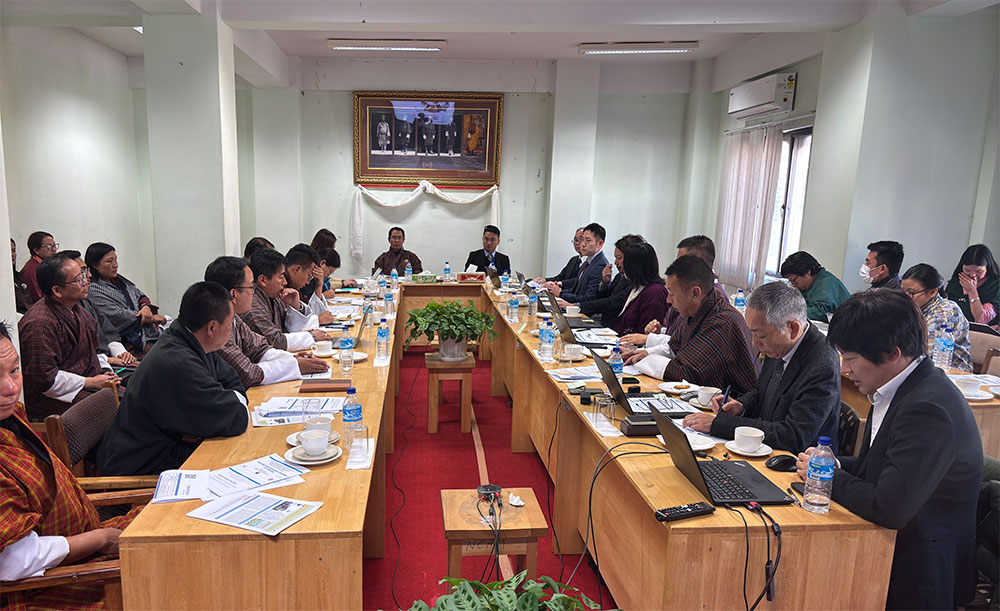Dechen Dolkar
The Japan International Cooperation Agency (JICA) has installed advanced flood Early Warning Systems (EWS) in the critical Thimphu and Paro river sub-basins to enhance disaster preparedness resilience.
This initiative, part of JICA’s Technical Cooperation Programme (TCP), aims to bolster the country’ scapacity to forecast and respond to weather-induced disasters, ensuring better preparedness in these flood-prone areas.
At the Fourth Joint Coordination Committee (JCC) meeting held on Thursday, representatives from JICA and Bhutanese agencies reviewed the project’s progress, celebrating key achievements while also acknowledging ongoing challenges.
The project is being jointly implemented by the National Centre for Hydrology and Meteorology (NCHM) and the Department of Local Governance and Disaster Management (DLGDM).
The goal of the project is to build a disaster-resilient society by improving Bhutan’s capacity for weather observation and forecasting. It also includes expanding the use of meteorological data by DLGDM, local governments, and relevant agencies in the Thimphu and Paro river basins to better manage flood risks.
The flood EWS upgrades are expected to significantly enhance Bhutan’s preparedness for extreme weather events, such as flash floods, by providing timely and accurate warnings.
A key achievement of the project is the development of a Glacial Lake Outburst Flood (GLOF) breach model and flood hazard mapping for two critical rivers, Thimphuchhu and Parochhu.
The project has also enhanced the capacity for weather observation and forecasting by upgrading the communication system of the flood EWS on Mangdechhu and Chamkharchhu rivers to the Japanese Himawari Satellite system, , a cutting-edge Japanese technology that improves the accuracy of weather observation and forecasting.
The project has also rehabilitated the Benjizam flood station in Trongsa, which had been damaged by previous floods.
The project has installed calibration facilities, established a weather studio, and built capacity for utilising satellite rainfall data. It also introduced a forecast guide for temperature and rainfall.
Senior advisor for Meteorology of JICA, Masahito ISHIHARA, said that the NCHM has achieved highly accurate observations through this project.
JICA categorises the development of meteorological services in each country into three stages: basic, essential, and full.
Masahito ISHIHARA said that NCHM’s meteorological services have reached the ‘essential’ stage, with capacity development being a key focus for further improvement.
“We introduced several capacity development options, including on-the-job technology transfer by consultant experts, two-week training courses in Japan, expert dispatches from Japan, as well as a three-month JICA training course at the Japan Meteorological Agency,” he added.
He said that the next step for NCHM is to advance its capabilities to the ‘full’ stage, and JICA is considering further cooperation to support this progress.
One of the key challenges identified in the meeting was the difficulty of engaging local communities in disaster preparedness activities, particularly mock drills, given that Bhutan has not experienced major disasters in recent years.
The deputy chief programme officer of DLGDM, Choki Tashi, said that vulnerable communities along the Thimphu and Paro river basins have been identified and provided with disaster preparedness measures.
The TCP Phase II project commenced in 2020 but faced implementation delays due to the Covid-19 pandemic, leading to an extension until December 2024.
The project aligns with global Sustainable Development Goals (SDGs) and the Sendai Framework for Disaster Risk Reduction (2015-2030).


